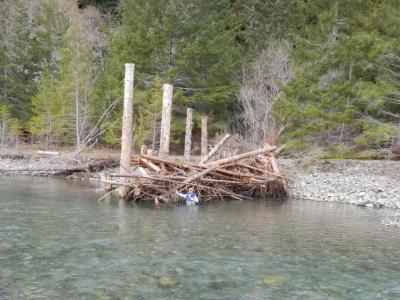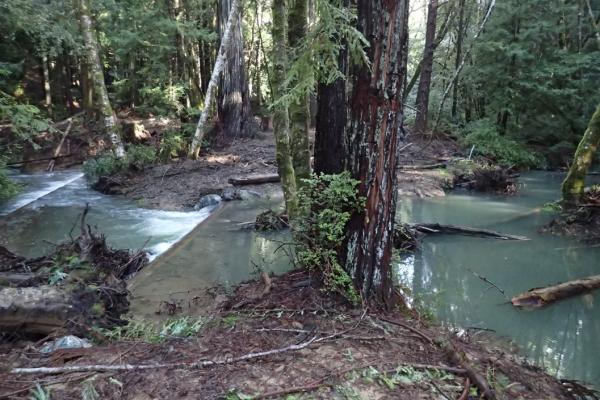Instream Restoration and Groundwater Recharge in the Mattole Headwaters
Tour Coordinators:
Tasha McKee, Sanctuary Forest
Sam Flanagan, Bureau of Land Management
Joel Monschke, Stillwater Sciences
Campbell Thompson, Mattole Salmon Group
John Neill, John Neill General Engineering Contractor, Inc.
Anthony Lovatto, John Neill General Engineering Contractor, Inc.
Michelle Robinson, Pacific Watershed Associates
The Mattole headwaters tour will focus on restoring drought resilience, summer streamflows, floodplain connectivity, and in-channel habitat for salmonid populations. Despite the generally low gradient, gravel-bedded channels of the Mattole River headwaters, pervasive channel incision presents a number of constraints on anadromous fish utilization. Since 2012, Sanctuary Forest and the Bureau of Land Management have been working to address these constraints in Baker Creek, a 4.1 square kilometer tributary to the upper Mattole River. The tour will encompass both instream and upslope approaches for restoring groundwater needed to sustain summer flows. The instream reach hosts a range of instream woody debris work begun in 2012 with the objective of increasing groundwater levels, improving instream habitat, and reconnecting historic floodplains. The tour is intended to spur discussion on restoration in incised stream channels where several factors conspire to limit salmonid productivity: depleted streamflows, lack of instream habitat, and poor floodplain connectivity. Information on the geologic setting, past cycles of valley filling and incision, and hydrologic ramifications will be discussed. Here restoration work was initially focused on raising the channel bed to improve floodplain and groundwater connectivity, in addition to improving instream habitat complexity. More recently, efforts have focused on enhancing groundwater retention along the adjacent alluvial terraces through creation of a series of seasonal wetlands. Participants will view the results of past instream work, recently implemented groundwater recharge features, and review data on groundwater responses, water quality, and fish use. Tour leaders will include key partners in project planning and implementation who will share their experiences with challenges, lessons learned, and results.


